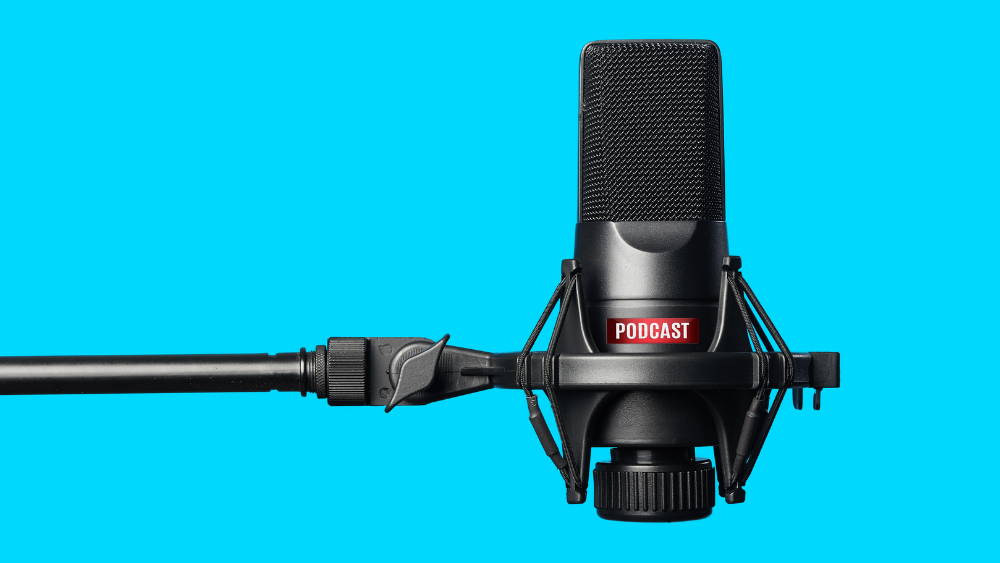Insights
INSIGHTS
All Topics
My Account
A personal guide to creating a podcast
07 Jul 2021by Danny Attias
Guest writer Danny Attias, Chief Digital and Information Officer at Anthony Nolan, reflects on his experience learning how to create his very own podcast
In April 2021 I was invited to be a guest on a podcast, Inspiring Tech Leaders with Dave Roberts, and I found the experience humbling (to be asked), exhilarating (to participate), and gratifying (to be published, on Spotify no less!).
Having been listed as the #1 Technology Leader in the UK in the 2020 CIO 100, I wasn’t a stranger to getting involved in panel discussions, video interviews, articles, and presentations, but the format of a podcast was a little different in that it was perpetually available to a wider audience rather than being linked to a specific event or moment in time.
Taking the first steps
I completed Seth Godin’s altMBA in May 2021, an incredibly intensive, deep dive into business, marketing, storytelling, empathy and self-discovery. You can read more in my article.
During the altMBA, I thought it would be ‘fun’ to start up my own podcast and this is where my story begins. I had certainly taken for granted all the work Dave had put in behind the scenes to come up with his concept, brand and build, let alone the effort required to maintain a weekly release cadence. I was in for a rude awakening.
Creating something from nothing was going to be a creative challenge for me. I tend to be more functional that artistic and taking something rough and making it brilliant was much better suited to my wheelhouse.
When undertaking a creative challenge like a podcast, I knew I must not succumb to ‘resistance’, a concept coined by the novelist Steve Pressfield in his book The War of Art. Resistance is the universal force that is focussed on keeping things how they are, an aversion to change.
Resistance comes in many forms and, in my case, it was guaranteed to come from the intrigue and instant gratification in diving into the technical aspects of creating a podcast, which would distract me from the hard work of really defining the core concept.
In order to move quickly and avoid going down rabbit holes, I set myself a target of preparing, in just one evening, a one-page summary covering the purpose of the podcast, the target audience, the change I am trying to enable in audience, a working title, a working description and a list of actions that I would need to get done before I could launch.
This served a few purposes, as it allowed me to escape getting bogged down in one or two ingredients and it created a sense of social accountability. I shared this plan with my altMBA alumni who were incredibly well versed in reviewing such things and providing insightful feedback.
The commitment was established and I was now committed to seeing the podcast through, not just because I said I would do it, but also because I wanted to.
Preparing a podcast
If you want to push a podcast live there are very few things you really need, other than the audio file, a name, a description and cover art.
Finding guests, structuring a conversation, and recording the conversation didn’t really worry me, neither did the technical aspects of audio editing, publishing, and other enhancements such as blending intro music, creating a transcript or publishing a website.
With more than one million active podcasts now listed on iTunes, I knew the marketplace of tools to make those bits pretty easy was going to reduce most of the friction from that side of things.
In fact I distilled the process into 12 key components, from who’s it for and what’s it for to the music and cover art and created The Podcast Planning Canvas for anyone to use.
What I didn’t count on was how incredibly hard it was going to be for me to come up with a name, a description, and cover art. I needed to explore my rarely tapped creative side.
I asked myself some questions. What was it actually going to be about? What was important to me? What did I want to explore more deeply? What did I want to share with my audience?
What is the podcast all about?
Social purpose is important to me. It is no coincidence that I have spent the past five years leading the digital transformation for a leading UK medical charity.
As more social enterprises are being established and a greater number of commercial entities are signing up to become BCorps, there is an encouraging trend of organisations, staff, and customers wanting to be a positive contributor to society.
While it is important that people look after themselves and their families, we are part of a global society that cannot function sustainably if everyone is in it for themselves. The importance of diversity, inclusion, social mobility, as well as environmental concern can no longer be an afterthought, way down on the priority list after self-gratification, convenience, personal wealth, and ambition.
So that’s what I decided to cover. I would be looking to have conversations with people who are prioritising these important aspects and exploring their journeys of how they came to be that way, what were the key moments in their life story to make them this way?
The moment of sonder
And how does it all begin, with that moment of sonder, when you realise that everyone has a life as rich and conflicted as your own. Sonder is that realisation can help grow your empathy to people beyond your immediate family and friends.
I wanted to share stories about sonder growing to the point that people want to have a positive influence, use their position, influence, and resources to make a difference to lives beyond their field of view, to add richness to stories they are not a part of and would never hear about.
Those are the inspiring stories I want to share. That’s Sondership.
The importance of good art
As soon as I had a name, I was able to register sondership.com, .co.uk, and .org, as well as all social media pages and then I could get started on the cover art. Now, I am no artist, so I knew I was going to have to outsource, which is why I sought out a designer on Fiverr, a remarkably convenient platform used to connect with creative freelancers all over the world.
For a small fee I was able to meet a wonderful London-based designer who got straight to work on creating concepts with the hope that we would land on a design in about three iterations.
After a few iterations, I had amassed over a dozen designs, unfortunately none of them really worked for me, so in the end, inspired by those iterations, I created my own using Canva, an easy-to-use platform for creating visual assets from templates. The designer helped me refine my design and all associated social media headers.
Time for the technical rehearsal
While I did not allow all of the exciting technology to distract me from the hard work, I did use it as a breather when my brain was too fried to concentrate on really creative output.
I allowed myself two hours to do a full technical rehearsal. In those two hours, I was able to take a rough 30-minute pre-interview with my first guest and pull everything together to ‘privately’ publish a test podcast with all the necessary components.
The content and quality was not at the standard I would have liked but that was not the point. The point was to make sure that I had everything I needed to go live.
I was able to confirm that my toolbox would consist of:
- Buzzsprout: For podcast hosting, distribution to all podcasting platforms, audiogram creation, and automatic podcast website creation and maintenance
- Podpage: Also useful, as it provides a more enhanced, automated website with the ability to add extra pages, such as blogs, and it allows a guest sign-up form and integration with email marketing contact forms, which helped to build a contact list to send newsletters
- Convertkit: Email marketing platform to build up a community and let them know when new episodes are released, as well as other activities in the future
- Auphonic: For artificial intelligence (AI)-driven mastering of the audio track including smart adaptive levelling, perfect loudness, true peak targeting, audio sweetening, and optimisation for spoken word
- Descript: For a truly inventive, AI-powered, text-driven audio editor with automatic speaker identification and transcription
- Canva: For creating all the cover art and social media visual content
- Zoom: For actually recording the interviews
- YouTube audio library: For choosing music with the appropriate use rights was pretty hard but an hour with my musically gifted daughter listening to the first five seconds of over a hundred tracks we were able to find the perfect piece, Buddha by Kontekst
- Audacity: A free technically-complex tool to remove the first bars of my chosen track and blend it into an intro
I estimate that I will need at least three times the length of the podcast to review, edit, quality check, publish, and promote. Given a presumed podcast length of under an hour I anticipate it will take four to five hours work per episode including making arrangements with guests, pre-interview discussions, and planning.
I am targeting a weekly release cadence so in order to reduce the weekly pressure I will aim to get three-to-five interviews recorded and produced as a buffer before launching.
The future of Sondership
My hope is that Sondership will grow into a multi-channel platform for people to share their experiences and journeys related to sonder, to inspire and encourage more people to pursue their social purpose.
I am even hoping to launch an event in 2022 where a growing community can come together in person to share their stories and inspire each other.
I really do hope you will tune in to listen to the trailer and subscribe on your favourite podcasting service, the first full episode will launch in early July.
More on this topic
07 Mar 2025by Laura Stanley
Marketing trends for charities in 2025
Recommended Products
07 Mar 2025by Laura Stanley
Marketing trends for charities in 2025
17 Feb 2025by Laura Stanley
Charity Digital Exchange: Grow your charity with AWS
Our Events
Charity Digital Academy
Our courses aim, in just three hours, to enhance soft skills and hard skills, boost your knowledge of finance and artificial intelligence, and supercharge your digital capabilities. Check out some of the incredible options by clicking here.














